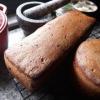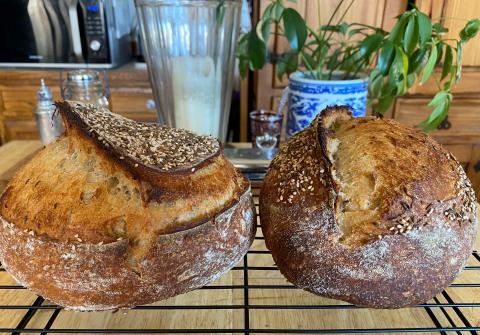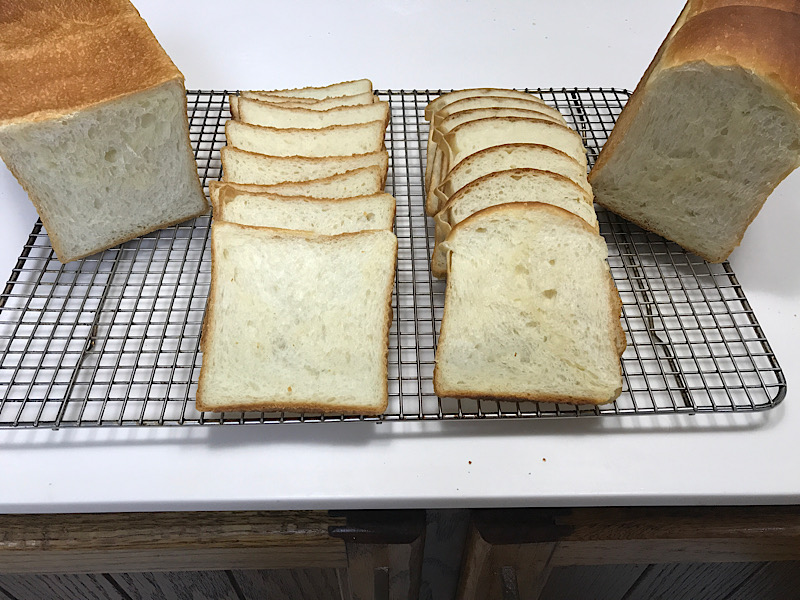To learn more about concentrated lactic acid sourdough (CLAS), please see here and here.
A few years ago, when I read about how a Japanese bakery called Backstube Zopf builds its rye starter, I asked myself: How is this possible? With just two builds in 24 hours, the bakery makes an active, aromatic rye starter with a pH of 3.6 to 3.8. It also seemed incredible that the bakery's typical bread production cycle is so fast. It includes no bench time or a very brief rest after mixing (e.g., 15 minutes). Then there is a 30 to 60-minute proof followed by baking.
Backstube Zopf is located in Matsudo City, Chiba Prefecture, Japan. The bakery initially caught my attention because of its extensive rye bread menu. The bakery's owner, Yasutomo Ihara, is an artisan baker passionate about promoting rye bread to the Japanese people.
I later learned that the secret to the bakery's operation is two industrial rye sourdough cultures: one called TK starter, made by a German company, BÖCKER; and the other one called Active Sour, made by a Japanese company, オリエンタル酵母工業株式会社. These cultures are aroma-intensive and able to sour immediately. They are not only expensive but also unavailable to individuals. Without access to these commercial cultures, having a rye starter like the one in the bakery seemed like an unreachable dream for a home baker.
Then CLAS came into my life unexpectedly. It takes 24 hours to make. It has a pH of 3.6 to 3.8. With the addition of CLAS, the flavor of every bread recipe is taken up a notch. It allows me to make delicious, bakery-grade rye bread at home quickly and easily in a simple way that I never imagined possible. What a pleasant surprise! It's a dream come true!




 Thanks to Rus, the rye baker who showed me the tricks, I'm forever grateful.
Thanks to Rus, the rye baker who showed me the tricks, I'm forever grateful.
As you know, I have a sweet tooth. I'm trying to build up my sweet bread recipes so that I have enough recipes to rotate. Lately, because of the holidays, I've been eating a lot of sweet bread made with refined flour, so now it's time to switch to whole-grain. Backstube Zopf has a sesame raisin walnut rye that looks very tempting. Here's the (65%rye35%spelt) whole-grain version I made with CLAS:
A.
35% fresh whole spelt flour, ground in the Vitamix
15% whole rye flour - CLAS
28.5% water - CLAS
mix to autolyze as I prepare other ingredients
B.
22% flaked rye
51% boiling water
mix to rehydrate the flakes
C.
1.5% salt
0.3% dry yeast
D.
29% fresh whole rye flour, ground in the Vitamix
E.
16% water
F.
19% golden raisins, rum-nuked
19% raisins, rum-nuked
38% walnut
Total dough weight ~ 1400g
Mix
in the Zojirushi bread machine
1.
add A. mix ~10 mins to strengthen the gluten
2.
add B. gradually
mix until incorporated
add C.
mix until incorporated
3.
add D.
add E. gradually until the dough feels right
4.
Transfer the mixed dough to KA
as I don't want the sticky dough to ruin my precious Zo
5.
KA+paddle
add F.
mix briefly to incorporate
Bulk
33C x 30 mins
in the meantime
butter the bundt pan
coat with white sesame seeds
Shape
round
poke a hole in the center
gently load into the bundt pan
load the bundt pan into a granite roaster
Proof
35C x ~210 mins
until cracks appear on the surface
Bake
cold oven
Lid on granite roaster
set to 400F, ~20 mins
400F x 40 mins
Cool
wrap in tea towels
put in a plastic bag overnight
See Mini's advice for more tips on cooling rye loaf.
Thanks, Mini!💋💋💋












































